Weka can be engaging and entertaining, but their opportunistic appetite for other birds’ eggs and chicks can cop them some controversy. They’re not always welcome at ecosanctuaries, for example, even though their own numbers are threatened.
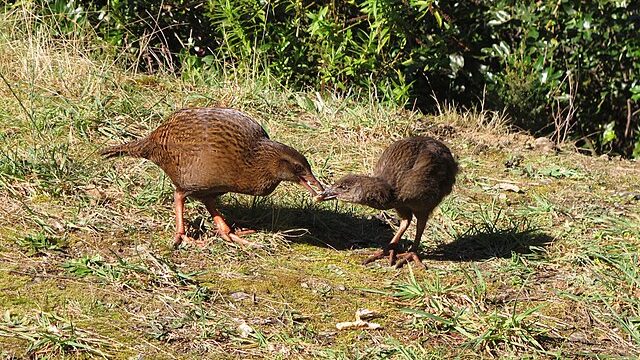
Native predators like weka, harrier hawks and falcons were once part of a balanced ecosystem. Not all wildlife predators in Aotearoa/New Zealand are introduced mammals. But introduced predators have disrupted the balance and sometimes the omnivorous eating habits of weka seem like the final threat that could tip other rare species over the edge.
So where does that leave weka? Is there such a thing as a ‘good predator’? What other, perhaps crucial roles might weka play in the ecosystem that we need to take into account?
Joanna Carpenter, John Innes, Jamie Wood and Phil Lyver from Manaaki Whenua – Landcare Research look at what we know about the roles of weka in both past and present ecosystems in an article just published in the New Zealand Journal of Ecology. They begin by pointing out that New Zealand’s avifauna did not evolve in the absence of predators but only in the absence of mammalian predators.
“Predators, which we define for this paper as terrestrial vertebrate species that prey on other terrestrial vertebrates (including their eggs), play a crucial role in regulating ecosystems and maintaining biodiversity. Apex predators, which we define as predators that are not killed by other species as adults, occupy the top trophic position in a community and can indirectly affect plant diversity and abundance by mediating the density and behaviour of herbivore populations. They also suppress populations of smaller predators (mesopredators, which differ from apex predators in that they are killed by other predators as adults), thereby moderating predation on smaller prey species.”
Predators may help regulate disease by preying on the sick. They can buffer ecosystems against invasion.
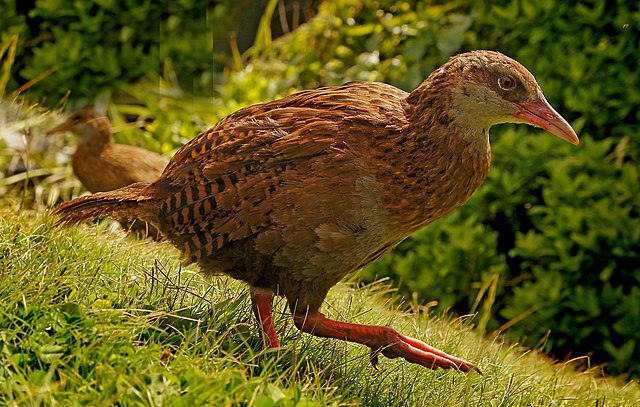
“Although the important role of predators in ecosystems is now widely acknowledged, restoring predator populations is still controversial, because predators can have deleterious impacts on other valued species. Weka (Gallirallus australis) are a textbook example of this conflict, being a threatened species that sometimes preys on other threatened species. As the impacts of predators are highly context-dependent, ecologists have limited ability to forecast their effects on ecosystems.”
Native species in a modern context may be much more vulnerable to native predators than they once were. But there’s another side to the coin too: reintroduction of native predators may provide opportunities for them to control introduced species, as with New Zealand falcons being introduced to vineyards to control the impact of introduced pest birds.
“New Zealand’s prehistoric terrestrial predator guild was devoid of mammals and almost completely dominated by birds, including the world’s largest known eagle (Haast’s eagle Aquila moorei) and largest known harrier (Eyles’ harrier Circus eylesi). These avian predators would have played an important role in regulating New Zealand’s ecosystems. The replacement of the original avian predator guild with a guild dominated by mammalian predators is the key cause of most current New Zealand vertebrate declines.”
The importance of native predation is usually overlooked in restoration scenarios, the authors say.
“For example, the initiative to eradicate several species of introduced mammals from New Zealand by 2050 is known as the Predator Free New Zealand programme, and offshore islands and sanctuaries that have undergone eradications of introduced mammals are commonly referred to as “predator free”. Yet many native avian predators are still extant, although much reduced from their previous densities and distributions.”
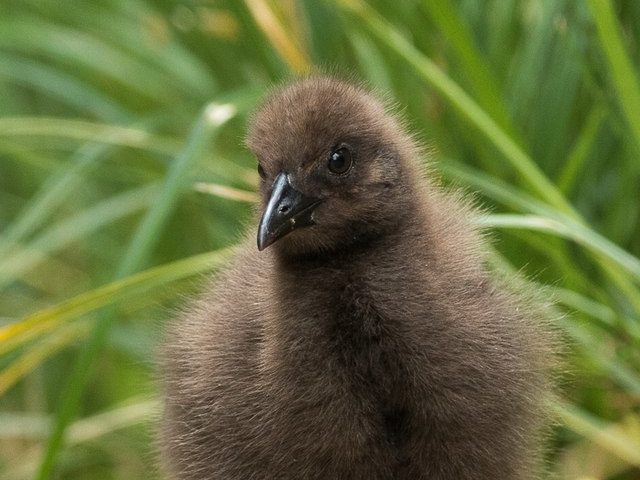
“Restoring New Zealand’s native extant predators to the regions they historically inhabited will in part increase ecological integrity, a key goal guiding restoration in New Zealand. High ecological integrity can be defined as the composition and abundance of native species typical of a region are present, together with the key ecosystem processes that sustain functional relationships between these components.”
Weka epitomise many issues around native predator restoration.
“The gregarious, inquisitive nature of weka make them a special species for many New Zealanders, and Māori historically harvested them for food, feathers, and oil. These flightless rails once occurred in diverse habitats across most of the New Zealand mainland (North, South, and Stewart Islands), but over the last century have been extirpated from most of their natural range, mainly due to predation by introduced predators and starvation during droughts.”
The International Union for the Conservation of Nature (IUCN) currently classify weka as ‘vulnerable’, with a decreasing population trend. Climate change is predicted to make the weka’s situation worse with human assistance likely to be needed to conserve and protect them. But because they can prey on other threatened species, weka have been deliberately eradicated from at least eleven offshore islands, say the authors, including some where they occurred naturally (e.g. Entry Island, Fiordland).
“They are frequently excluded from mainland restoration projects despite their historical presence at ecosanctuary sites, mainly due to fears that weka will preclude opportunities to introduce other threatened fauna.”
So is it time conservationists changed the way they think about weka?
“Conservation practitioners require a nuanced understanding of the ecological functions carried out by weka, so that the benefits of their restoration or reintroduction can be balanced against their possible negative impacts on other threatened native fauna. In this review paper, we highlight the role of weka in New Zealand’s prehistoric and contemporary ecosystems. We (1) review studies of weka diet and summarise the impacts of weka feeding on native fauna and introduced vertebrates; (2) contrast prehistoric and contemporary predation webs focused on weka, to highlight New Zealand’s original predator guild and to demonstrate the dramatic shifts that have occurred in predator guilds since human arrival; and (3) consider the role of social-ecological approaches in the management and restoration of weka.”
Weka are flightless, but can climb and jump vertically. Their foraging is mostly confined to the ground.
“Their most common foraging method is moving across the ground and flicking litter with their beak. They can move logs up to three times their body weight. Weka also sometimes probe with an open bill at surface objects, such as fruits, fallen flowers, and worms. Occasionally, they pound large objects before feeding on them. This method is used to break up flesh, puncture eggs and the skulls of chicks, and obtain roots and tubers of orchids.”
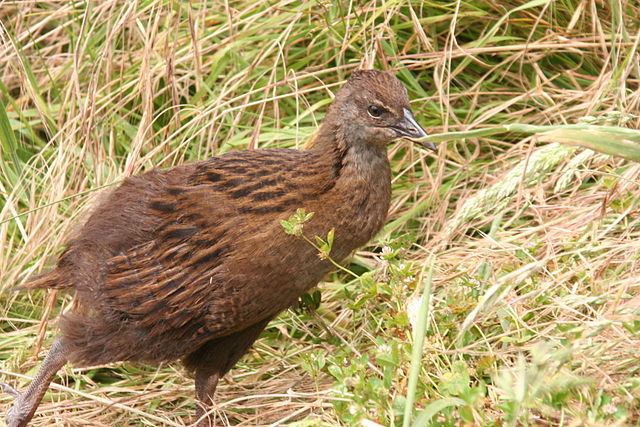
The authors cite ten studies that assessed weka diet using either faecal examinations, analyses of gizzard contents, or both methods.
“The results demonstrate that weka are opportunistic omnivores generally consuming food items in proportion to availability. Their diet is typically dominated by fruit, seeds, and invertebrates. Beauchamp (1987) notes that preferred foods are vertebrate flesh and eggs. This is apparently more important on islands, perhaps reflecting the greater availability of vertebrate food on some islands compared to the mainland. Petrel eggs and chicks were common food items on offshore islands such as Whenua Hou and Taukihepa, and rodents were important foods for weka on Macquarie Island.”
Most mainland studies did not record vertebrates as a large component of weka diet. Most of the studies also did not determine how often prey items were scavenged, as opposed to depredated.
So what are the impacts of weka on native species?
“Evidence for individual level impacts of weka on native vertebrates is abundant, yet compelling evidence for population level impacts is scarce. Weka have been recorded destroying the eggs and chicks of ground nesting birds including kiwi, Fiordland crested penguin, tītī, southern Buller’s albatross, mottled and Cook’s petrels, fairy prion, kākāpō, Chatham Island oystercatcher, takahē and whio. They can also kill the fledglings and chicks of volant birds such as tīeke, robins, tūī and kākā. Weka also consume lizards and introduced frogs. However, captive weka rejected live Archey’s and Hochstetter’s frogs unharmed after holding them in their bill, possibly due to the frogs’ gland secretions.”
The annual population growth rate of tīeke on Kundy Island increased from a mean of 9.8% in the presence of weka, to 14.5% with weka removed, but most evidence for population-level impacts of weka on native vertebrates is circumstantial, the authors say.
“Weka predation is believed to have driven declines of tītī on Kāpiti Island over the last 30 years, and a weka-proof fence has been constructed to protect the last breeding colony. However, a population of Westland petrels on the South Island has high adult survivorship and fledging success in the presence of weka.”
“Tīeke populations on Kāpiti Island did exceedingly well in the presence of weka, with an annual population growth rate of 33.2%. Despite initial fears, weka predation on eggs seems to have little impact on the little spotted kiwi population on Kāpiti Island, with more kiwi chicks surviving than territories available.”
So mixed results for weka predation of other birds – but what about invertebrates?
“Although invertebrates make up a large part of weka diet, the impacts of weka feeding on invertebrate populations are often not well studied, except for some of the larger, more charismatic species. Meads et al. (1984) recorded highly variable levels of weka predation on Powelliphanta (land snail) species and concluded that although native predators like weka should not seriously threaten Powelliphanta species by themselves, weka predation combined with introduced predators, habitat modification, and habitat loss could have serious consequences.”
“Weka are also more likely to reduce prey populations when the prey species is already limited or has been limited by other factors, such as predation by introduced mammals. Habitat loss and degradation may also play a part, as the loss of habitat that acts as refuges from predation could amplify the impact of weka on prey populations. For example, browsing by ungulates removes understorey and ground cover, exposing Powelliphanta snails to weka and other predators.”
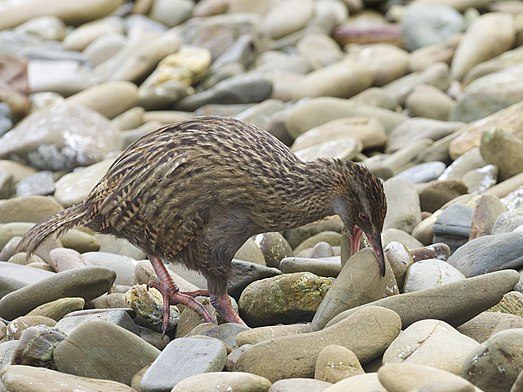
Weka have also been observed killing introduced vertebrates, including rats, mice, mustelids and rabbits.
“King (2017) notes that “…during an irruption of forest rodents in Fiordland, western weka could be seen eagerly snapping up mice and swallowing them head first.” Similarly, McConachie (1966) observed weka eating so many mice during a plague that the birds’ intestines became bound up in fur, killing them. Ogilvie (2010) recorded a weka competently killing a mouse and suggested that mice might be a common prey item for weka in the wild, while Blackburn (1968) attributed the low density of kiore on Whenua Hou to predation by weka. European settlers were well aware of the potential value of the weka as a predator of rabbits, with many agreeing that weka were a better weapon against rabbits than introduced mustelids or poisoned bait. A marked decrease of rabbits in South Canterbury in the late 1800s was attributed to predation by weka (King 2017).”
Could weka suppress introduced mammal populations? So far that interesting possibility hasn’t been tested.
“It would be particularly useful to know whether weka could suppress mouse populations in the absence of other mammalian predators. Mice are present in most fenced ecosanctuaries in New Zealand and can reach high densities once other mammalian competitors and predators have been removed. Burgeoning mouse populations are also likely to become an increasing problem across New Zealand if Predator Free 2050 is successful, as this initiative involves removing several introduced species that currently suppress mouse populations. If weka are capable of suppressing mice, they could become a useful tool for both ecosanctuaries and the Predator Free 2050 initiative.”
As omnivores, weka are involved in several ecological processes in New Zealand’s ecosystems besides predation.
“Their large gape and fruit consumption make them an important seed disperser, especially for species such as hīnau which may rely on dispersal by flightless birds. They can retain seeds in their guts for almost six weeks (the longest avian seed retention times ever recorded), which gives them the potential to carry out important long distance (> 1 km) seed dispersal. Finally, they opportunistically scavenge on carcases, removing carrion and potentially reducing disease transmission.”
Weka are also valued by Māori with customary harvest of weka offering potential socio-ecological benefits.
“Opportunities to achieve cultural and ecological outcomes through biocultural approaches to restoration exist on some offshore islands where weka are not naturally present but have been introduced by humans. Weka are valued by Māori as food, a source of feathers for korowai (cloaks), and topical oil to treat inflammation, but also as a method of rat suppression. These are thought to be some of the reasons that weka were introduced to some Rakiura Tītī Islands.”
“The sustained customary harvest of weka on these specific islands offers itself as a restoration management tool that contributes both biological and cultural benefits. Under this system, weka could be harvested at a prescribed rate by kaitiaki and tangata tiaki (environmental guardians) to relieve predation pressure on native fauna in those habitats. The practice would contribute to annual mahinga kai (customary food procurement and security) options, help facilitate connection to place, and offer opportunities for regeneration and transmission of mātauranga (Māori traditional knowledge) around the species, its environment, and the practices associated with using the bird (e.g. feathers for raranga [weaving]; oils for rongoa [medicinal purpose]).”
“Opportunities to actively manage weka on islands where they have been introduced as part of a biocultural restoration design for other ecosystems could be therefore considered in partnership with Māori tribal entities. However, it must be noted that harvesting weka on the New Zealand mainland where weka populations are often insecure may impact the viability of the species and is illegal.”
Overall, the authors found “surprisingly little evidence” of weka predation having population level impacts on prey populations.
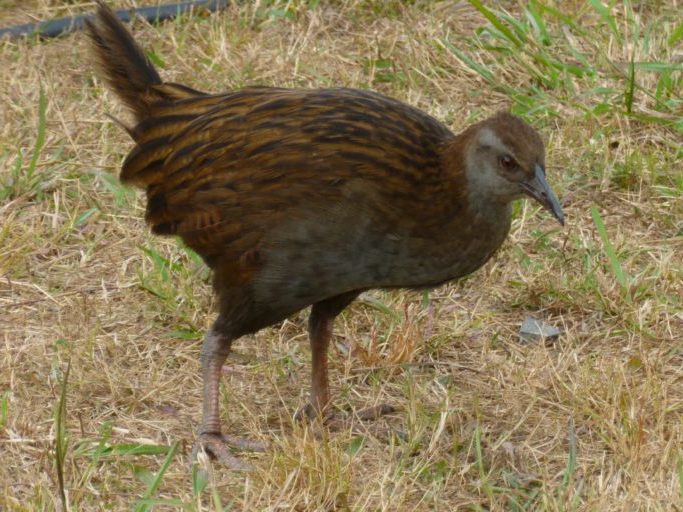
“The way that weka are managed is highly dependent on the situation and desired conservation outcomes of a restoration project. Therefore, conservation practitioners must clearly identify the relative importance of the goals they are trying to achieve through restoration, whether that be ecosystem restoration, species-focused conservation (and for which species), or biocultural outcomes, in order to make informed decisions on the role of weka.”
“Weka were historically a part of many ecosystems across the New Zealand mainland, so projects truly dedicated to ecosystem restoration should welcome their presence as an archetypal generalist that carries out many ecological processes. However, reintroductions of weka to mainland sites will probably fail unless intensive control of mammalian predators also takes place. Indeed, North Island weka are the most translocated bird in New Zealand conservation history, with 79 recorded translocations, yet only 8 (6 of which were to islands) have been successful, probably due to a combination of predation by exotic mammals and widespread dispersal by released birds.”
If weka aren’t always welcome in our ecosanctuaries, perhaps we can at least welcome them in our suburbs.
“Weka are engaging and charismatic, although they can have several nuisance behaviours, and can live in human-dominated, peri-urban and rural landscapes. Therefore, restoring weka also provides an opportunity to restore lively relationships between people and native birds in the places where most people live.”
‘Lively relationships’? The weka will be surely up for that!
The full article is published in the New Zealand Journal of Ecology and is freely available online.

